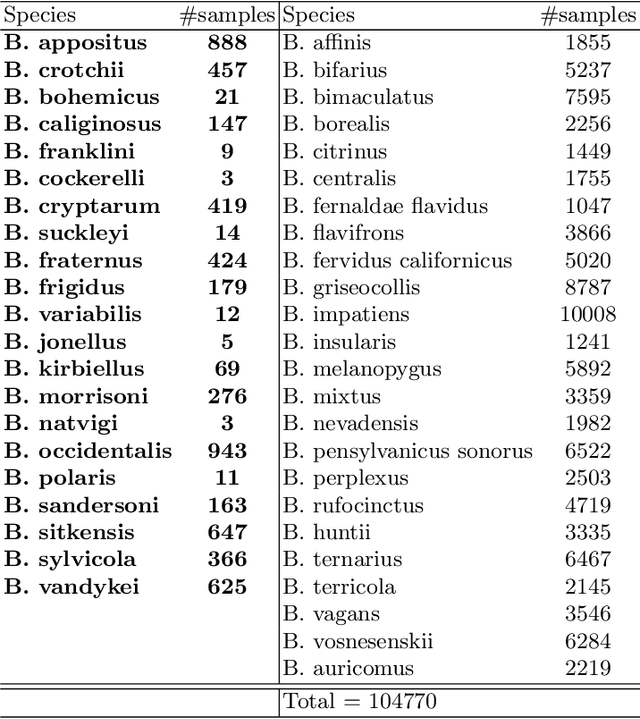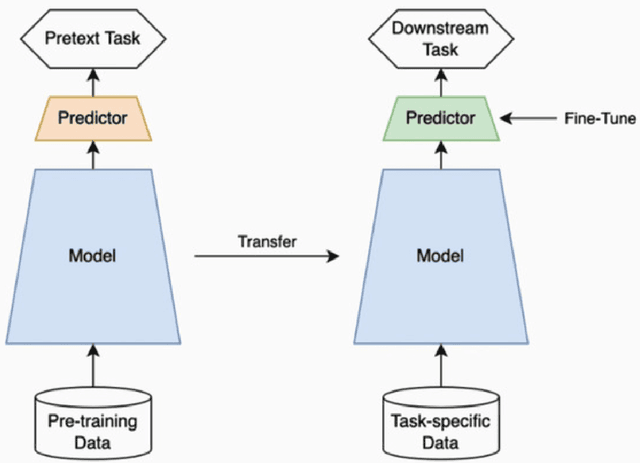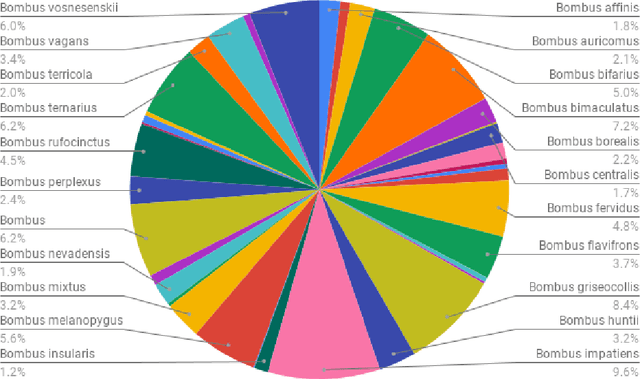Self-Supervised Approach to Addressing Zero-Shot Learning Problem
Paper and Code
Jan 21, 2022



In recent years, self-supervised learning has had significant success in applications involving computer vision and natural language processing. The type of pretext task is important to this boost in performance. One common pretext task is the measure of similarity and dissimilarity between pairs of images. In this scenario, the two images that make up the negative pair are visibly different to humans. However, in entomology, species are nearly indistinguishable and thus hard to differentiate. In this study, we explored the performance of a Siamese neural network using contrastive loss by learning to push apart embeddings of bumblebee species pair that are dissimilar, and pull together similar embeddings. Our experimental results show a 61% F1-score on zero-shot instances, a performance showing 11% improvement on samples of classes that share intersections with the training set.
 Add to Chrome
Add to Chrome Add to Firefox
Add to Firefox Add to Edge
Add to Edge